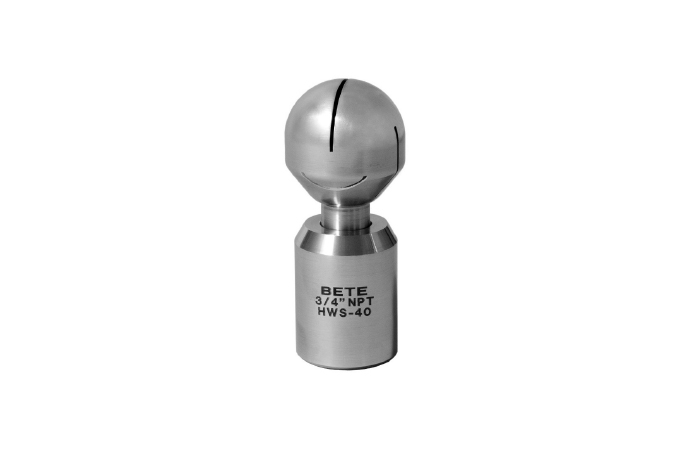
Tank cleaning is often not straightforward. Tanks may have filters, baffles or other design elements that make it seemingly impossible to find a cleaning in place (CIP) system that will work effectively. Throw into the mix issues such as size of the vessel and the very nature of the residue being left on the tank walls (e.g. is there an explosion risk, how stubborn or sticky is it?) and a CIP solution can seem like a pipe dream. This is where engineering expertise is essential.
The challenge
Nanoparticles have a huge range of applications and are used in a vast range of products. The value of the nanomaterials market is sizeable; it was said to be worth USD 8.5 billion in 2019.
A chemical company working across Europe approached SNP to help with cleaning filtration tubes in tanks used to synthesise nanoparticles from gases via the laser pyrolysis technique.
The situation
The tanks were relatively small at 2.5 x 1.2m and contained a large number of vertical filtration tubes which became covered with the powdery particle residue during the production process. The client wanted to be able to clean the tank so it could be used for different products without cross contamination. The client ideally wanted a CIP solution that could be inserted then removed and they stipulated that they would be cleaning with water alone since chemical products were not compatible with the metallic and ceramic particles being produced. If, as turned out to be the case, the CIP heads were to be permanently fixed, they had to have seals which could withstand the extreme heat and vacuum environment in the tank. There was 3 bar pressure available and a flow rate of between 50-250 litres per minute.
The solution
Upon questioning from SNP engineers, it was ascertained that there was an explosion risk from the residues and therefore an ATEX solution would be needed. The Solution SNP engineers recommended the use of the HydroWhirl S (HWS) rotary nozzles which are available in an ATEX version for explosive environments and which have no rubber seals or parts which would be susceptible to high temperatures. SNP sent the customer a nozzle head to trial in a tank without the vertical filtration tubes to see if it removed the residues successfully. A previous trial of a competitor model had not worked effectively. Once it had been reported that the HWS could provide the level of clean required, SNP specified the arrangement necessary to ensure no parts of the tank and tubes were missed during the cleaning process.
Due to the large number of vertical filtration tubes in the tank, a 360° spray angle was necessary and the nozzle heads needed to be placed at regular intervals across the tank, some of them tilted horizontally. This delivered the coverage needed and prevented any areas being missed due to ‘shadowing’ caused by the filtration tubes. The HWS 20-3 model worked at 3 bar and the nozzles together delivered a flow rate of 147.6 litres per minute.
The product
The HydroWhirl® S tank washing nozzle directs the cleaning water through a rotating head at the tip of the spray assembly. This produces a vigorous moving spray action against all areas of the walls of a tank. The spray pattern from the HydroWhirl® S head uses impact and repetition to quickly wash the tank. This spray pattern is especially effective at breaking up and removing contaminants.
Advantages of the HydroWhirl® S
- ATEX certified options available
- Variety of spray patterns
- 316 Stainless Steel for hygienic applications
- Uses less water & lower pressure than static nozzles
- Comes in three connections: threaded, clip-on, and welded
For advice on spray solutions for cleaning process vessels, contact SNP on 00 (44) 1273 400092.
Download case study at http://www.spray-nozzle.co.uk/docs/default-source/case-studies/nano-particles.pdf
To see our full range of CIP solutions, visit https://www.spray-nozzle.co.uk/spray-nozzle-applications/tank-cleaning










Water Sector Talent Exodus Could Cripple The Sector
Maybe if things are essential for the running of a country and we want to pay a fair price we should be running these utilities on a not for profit...